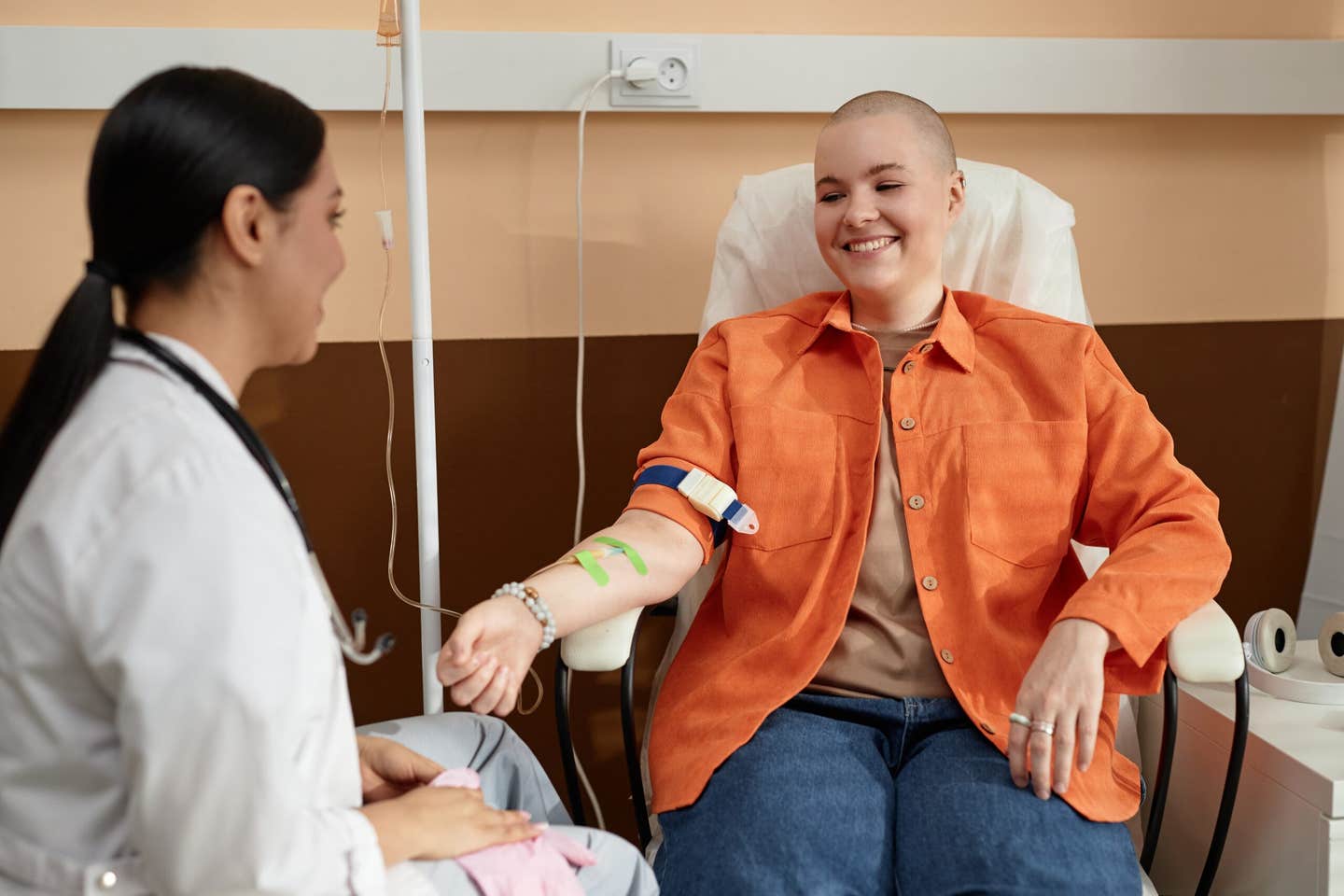70-year-old blood pressure drug unlocks a new way to treat cancer
A new study reveals how hydralazine works at a molecular level and shows how this long trusted drug may help stop aggressive brain tumors.

 Edited By: Joshua Shavit
Edited By: Joshua Shavit

Scientists uncover hydralazine’s true target, opening new possibilities for treating hypertension and glioblastoma. (CREDIT: Shutterstock)
For more than 70 years, hydralazine has helped doctors lower dangerously high blood pressure during medical emergencies, including life threatening cases of preeclampsia. The drug has been a mainstay in care, yet its inner workings have remained a mystery. Generations of physicians relied on it without knowing exactly what it did inside the body. That uncertainty limited efforts to make safer versions or explore its full potential.
A team of researchers has now uncovered the long hidden target of hydralazine. Their work reveals how this simple vasodilator sets off a cascade of fast molecular events that relax blood vessels and drop blood pressure. It also points to surprising new uses, ranging from maternal health to aggressive brain tumors.
Tracing the steps of a classic drug
Hydralazine came from a time when medicines were introduced based on clinical observation rather than molecular insight. Doctors saw what happened in their patients first. Only later did biologists try to explain why. Kyosuke Shishikura, a physician scientist at the University of Pennsylvania, says that approach made the drug useful, but also opaque. “Hydralazine is one of the earliest vasodilators ever developed, and it’s still a first line treatment for preeclampsia, a hypertensive disorder that accounts for 5 to 15 percent of maternal deaths worldwide,” he says.
Although effective, hydralazine behaves in unpredictable ways. It breaks down quickly and, with long term use, can trigger a lupus like reaction and organ injury. Researchers suspected it interacted with many targets but never identified a primary one. That gap stalled attempts to design forms with fewer risks.
Shishikura and his colleagues set out to solve the puzzle using a specialized chemical probe, HYZyne. It mimics hydralazine’s structure but carries a small “handle” that lets scientists trace its protein partners in cells. The team treated human kidney cells with HYZyne expecting a long list of targets. Instead, they got a single answer.
The probe consistently bound to 2 aminoethanethiol dioxygenase, known as ADO, an oxygen sensing enzyme found throughout the body.
Why an oxygen sensor shapes blood pressure
ADO plays a central part in how cells respond to fast changes in oxygen. Megan Matthews, a biochemist and co leader of the project, says its speed sets it apart. “Most systems in the body take time; they have to copy DNA, make RNA, and build new proteins. ADO skips all that. It flips a biochemical switch in seconds.”
That switch controls proteins called RGS regulators of G protein signaling. These proteins shorten the life of cell signals that regulate calcium. Inside the smooth muscle lining blood vessels, calcium levels decide whether the vessels tighten or open. High calcium keeps them tense. Low calcium allows them to relax.
By blocking ADO, hydralazine prevents RGS proteins from being destroyed. Their buildup damps down signaling through G protein coupled receptors, reducing calcium release and easing vascular tension. The drug’s fast action in clinics matches what the team saw in cells, where these changes began within an hour.
Support for ADO’s role in blood pressure also comes from human genetics. A known variant that lowers ADO activity has been linked with reduced blood pressure.
Watching the drug lock onto its target
The researchers then mapped how hydralazine binds to ADO at an atomic scale. They found that the drug interacts with the iron cofactor at the center of the enzyme. A key histidine residue, called H112, sits close enough to form a tight interaction. X ray structures captured hydralazine gripping the metal center in a bidentate fashion, replacing water molecules that normally sit there.
Further tests in mice showed that ADO was the primary target in heart tissue after hydralazine treatment. That detail matters, because the heart is central to blood pressure control and to conditions like heart failure, where hydralazine is still prescribed.
The team also tracked how blocking ADO changes signaling in living cells. RGS4 and RGS5, which are usually scarce, rose sharply within an hour of exposure. Downstream, Gαq proteins shut off faster, and calcium release fell in a dose dependent pattern. The pathway even helps explain one of hydralazine’s troubling side effects. Reduced ERK activity in immune cells, caused by RGS buildup, may contribute to the autoimmune reactions seen in long term users.
A surprising link to glioblastoma
One of the most unexpected discoveries came when the researchers looked at cancer cells. Glioblastoma, an aggressive brain tumor, thrives in low oxygen pockets. These tumors depend on ADO and its metabolic product, hypotaurine, to grow in those harsh conditions.
Because no ADO inhibitors existed, scientists could not test whether shutting down the enzyme would slow tumors. Hydralazine changed that. When applied to glioblastoma cell lines, it did not kill them but pushed them into senescence, a quiet state where cells stop dividing. A single dose held growth down for days. Markers associated with senescence, including p21 and several inflammatory cytokines, rose sharply.
Hydralazine itself cannot cross the blood brain barrier, but a direct injection of HYZyne into the brains of mice proved that ADO is accessible if a compound can reach it. That opens the door to new drug designs aimed at cancer.
Rewriting the story of a trusted medicine
Matthews sees the findings as a chance to modernize an old drug. “Preeclampsia has affected generations of women in my own family and continues to disproportionately impact Black mothers in the United States,” she says. “Understanding how hydralazine works at the molecular level offers a path toward safer, more selective treatments for pregnancy related hypertension.”
The results bring together cardiovascular biology and cancer metabolism in a surprising way. They also give scientists a tool to build better ADO inhibitors that may cross into the brain more easily. As Matthews adds, “It’s rare that an old cardiovascular drug ends up teaching us something new about the brain, but that’s exactly what we’re hoping to find more of.”
Practical Implications of the Research
This research provides a roadmap for designing safer blood pressure drugs and next generation treatments for preeclampsia. It also opens a path for new therapies that target ADO in brain cancer, particularly glioblastoma.
Understanding hydralazine’s true target could reduce side effects, improve dosing, and guide the creation of compounds that reach the brain more effectively. In the long term, these discoveries may improve maternal care, expand cancer treatment options, and help researchers explore oxygen sensing pathways across many diseases.
Research findings are available online in the journal Science Advances.
Related Stories
- Groundbreaking new brain cancer test has an 80% accuracy rate with no false positives
- Cambridge scientists reprogram brain cancer cells to stop them from spreading
- AI breakthrough offers non-invasive brain cancer screening
Like these kind of feel good stories? Get The Brighter Side of News' newsletter.
Joseph Shavit
Science News Writer, Editor-At-Large and Publisher
Joseph Shavit, based in Los Angeles, is a seasoned science journalist, editor and co-founder of The Brighter Side of News, where he transforms complex discoveries into clear, engaging stories for general readers. With experience at major media groups like Times Mirror and Tribune, he writes with both authority and curiosity. His work spans astronomy, physics, quantum mechanics, climate change, artificial intelligence, health, and medicine. Known for linking breakthroughs to real-world markets, he highlights how research transitions into products and industries that shape daily life.



